The Annapurna Circuit Trek stands as a remarkable journey through one of the world’s most picturesque regions, where diverse landscapes and vibrant villages captivate trekkers at every turn. Over the course of 23 days, adventurers navigate challenging trails, ultimately reaching the towering Thorong La Pass. They’ll encounter rich cultural experiences, sacred sites like Muktinath, and the soothing hot springs of Tatopani. Yet, the trek demands careful preparation and awareness of its unique challenges, raising the question: what does it take to truly embrace this iconic adventure?
Key Points
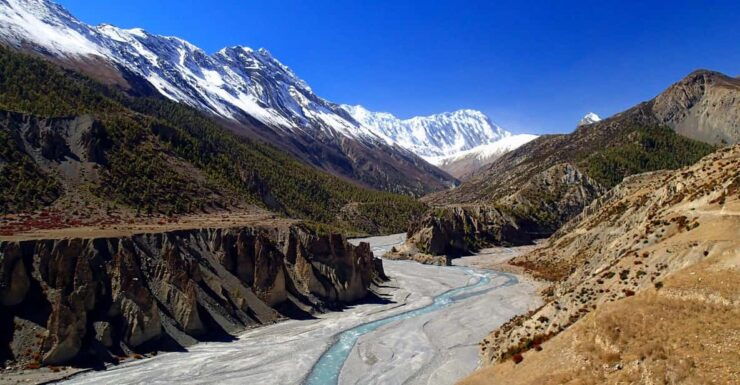
- The Annapurna Circuit Trek spans 23 days, starting in Kathmandu and featuring stunning views of Annapurna I and Dhaulagiri.
- Key highlights include the challenging Thorong La Pass (5,416 meters) and the world’s deepest gorge at Kali Gandaki.
- The trek includes culture, with visits to sacred sites like Muktinath, significant for both Hindus and Buddhists.
- Accommodations range from cozy teahouses during the trek to comfortable 3-star hotels in Kathmandu and Pokhara.
- Optimal trekking seasons are spring (March to May) and autumn (late September to November) for the best weather and views.
Trek Overview and Itinerary
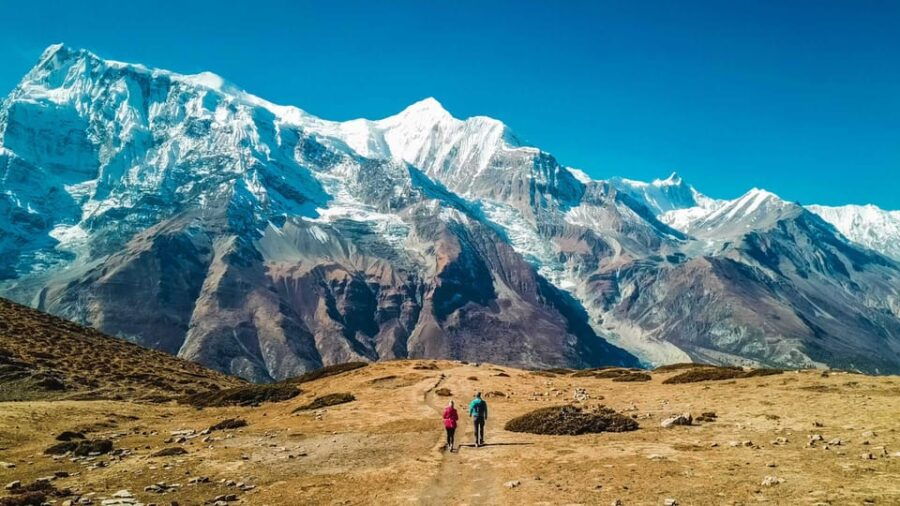
The Annapurna Circuit Trek spans an exhilarating 23 days, beginning in vibrant Kathmandu and winding through breathtaking landscapes that showcase the majestic peaks of the Himalayas.
The journey kicks off with a day of sightseeing in Kathmandu, allowing trekkers to soak in the rich culture before heading to Syange.
Over the next several days, the route leads through charming villages like Tal and Chame, gradually ascending to higher altitudes.
Key destinations include the stunning valleys of Manang and the iconic Thorong La Pass, standing at 5,416 meters.
Trekkers will enjoy rest days for acclimatization, ensuring they’re well-prepared for the challenges ahead.
The trek concludes with a drive back to Kathmandu, wrapping up an unforgettable adventure.
Like hiking? Other Muktinath walking trails we've reviewed
Experience and Highlights
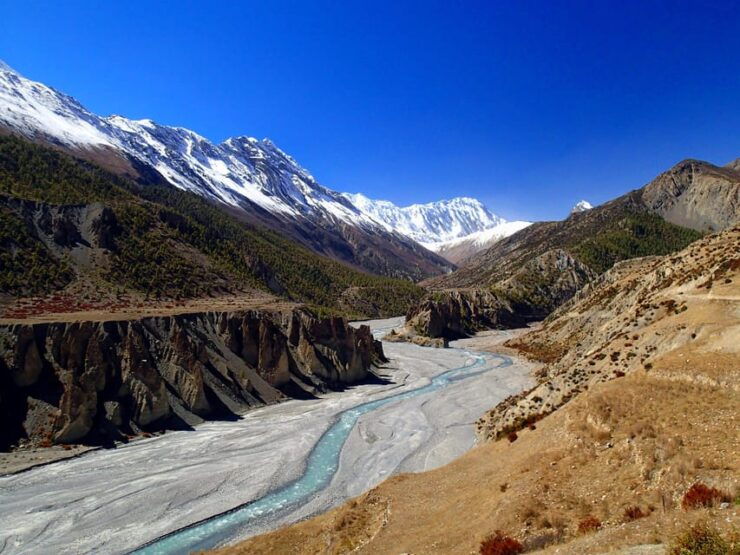
Breathtaking vistas and rich cultural experiences define the Annapurna Circuit Trek, captivating trekkers with its stunning landscapes and unique local traditions.
Adventurers are treated to awe-inspiring views of towering peaks like Annapurna I and Dhaulagiri, while exploring the world’s deepest gorge at Kali Gandaki.
The trek includes a visit to Muktinath, a sacred site for both Hindus and Buddhists, enhancing the spiritual journey.
At Poonhill, trekkers can revel in spectacular sunrises over the Himalayas.
After a long day, soaking in the natural hot springs of Tatopani offers a perfect relaxation spot.
Interactions with the warm-hearted locals in charming villages enrich the trek, making it an unforgettable blend of nature and culture that beckons every traveler.
Inclusions and Accommodations
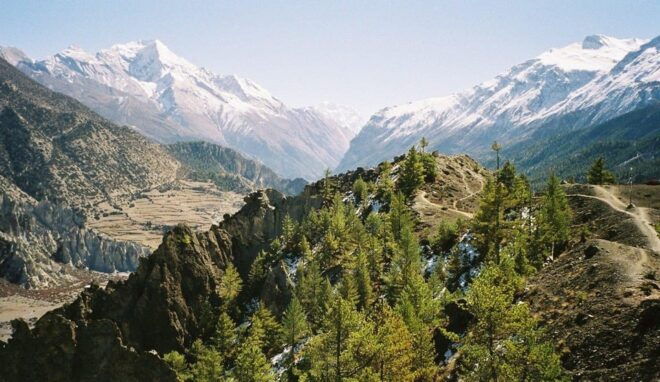
Trekking the Annapurna Circuit comes with a range of comfortable accommodations and delicious meals designed to enhance the overall experience. Trekkers enjoy cozy teahouse lodging during their adventure, where they can relax after a day of exploration.
In Kathmandu and Pokhara, they’ll stay in well-appointed 3-star hotels that include breakfast, ensuring a refreshing start to each day.
Daily meals during the trek consist of three hearty offerings, featuring local and international cuisine, along with hot beverages like tea and coffee.
Plus, travelers revel in welcome and farewell dinners in Kathmandu, celebrating their journey.
With seamless transportation, including airport pickups and scenic flights, every aspect of the trek is thoughtfully arranged for a memorable experience.
Trekking Support and Safety
Experienced guides and support staff play a crucial role in ensuring trekkers’ safety and comfort throughout the Annapurna Circuit adventure.
These seasoned professionals, often government-licensed and fluent in English, navigate the diverse terrains while sharing invaluable insights about the region.
Each trekker benefits from the assistance of a dedicated porter, typically one porter for every two trekkers, who carries essential gear and personal belongings, allowing trekkers to focus on the breathtaking scenery.
Safety measures are paramount; guides carry comprehensive medical kits and ensure trekkers have the necessary medical clearance for high altitudes.
Trekkers are also advised to secure adequate travel insurance, providing peace of mind while they embark on this unforgettable journey through the majestic Annapurna region.
More Great Thing To Do NearbyImportant Information
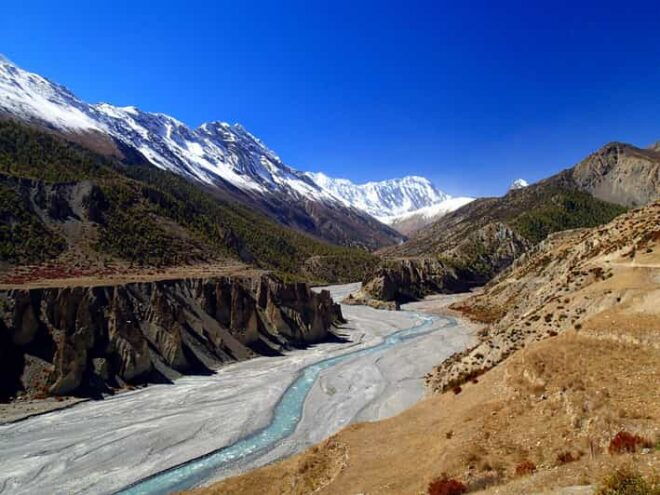
Preparing for the Annapurna Circuit Trek involves careful consideration of essential gear, health advisories, and personal limitations to ensure a safe and enjoyable experience.
Trekkers should pack comfortable shoes, warm clothing, a hat, sunscreen, and a camera to capture stunning landscapes. It’s crucial to stay hydrated and bring snacks for energy. Sudden weather changes can occur, so maintaining physical conditioning is vital.
This trek isn’t suitable for pregnant women or those with mobility impairments or heart issues. Plus, travelers should refrain from touching animals along the route to ensure safety and respect for wildlife.
Lastly, a flexible cancellation policy allows for free cancellation up to 24 hours in advance, providing peace of mind for participants.
- Pokhara: 4 Day Lower Mustang,Dhumba Lake,Muktinath Jeep Tour
- Pokhara: 3 Day Magical Mustang Road Trip
- Pokhara: 2 Day 4W Drive Mustang Tour With Muktinath Temple
- Nepal Odyssey: A Spiritual Journey – Kathmandu to Muktinath
- Kathmandu: 12 Day Upper Mustang & Lower Mustang 4W Jeep Tour
- Lower Mustang & Muktinath MotorBike Tour – 9 Days
Preparation Tips
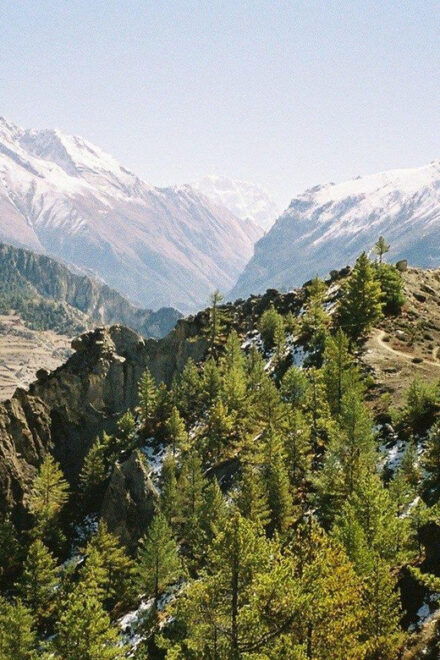
A successful Annapurna Circuit Trek hinges on thorough preparation, encompassing essential gear, physical conditioning, and knowledge of the trek’s challenges. Trekkers should focus on these key areas to enhance their experience:
Essential Gear: Invest in high-quality trekking boots, waterproof clothing, and a reliable backpack. Don’t forget trekking poles and a first-aid kit to ensure safety and comfort.
Physical Conditioning: Build stamina through regular cardiovascular exercises, such as hiking, running, or cycling. Strength training can also help prepare muscles for demanding climbs.
Acclimatization Knowledge: Familiarize yourself with altitude sickness symptoms and strategies to combat it. Gradual ascent and proper hydration are crucial.
Best Time to Trek
The best time to trek the Annapurna Circuit is during the spring and autumn months, when the weather is generally stable and the breathtaking mountain views are at their peak.
Spring, from March to May, showcases blooming rhododendrons and clear skies, creating a vibrant atmosphere.
Autumn, from late September to November, offers crisp air and stunning visibility, perfect for capturing the majestic Annapurna and Dhauligiri ranges.
While summer brings monsoon rains that can make trails muddy, winter poses challenges with heavy snowfall.
Trekking during spring or autumn not only enhances the visual experience but also ensures more manageable trekking conditions.
Choosing the right season can truly transform one’s journey through this incredible Himalayan landscape.
Questions You May Have
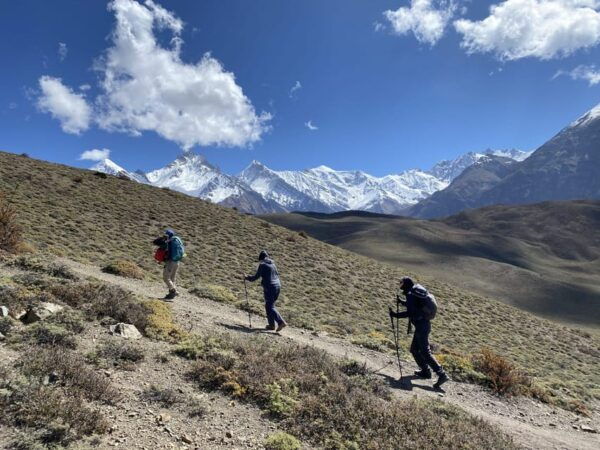
What Is the Fitness Level Required for the Annapurna Circuit Trek?
The fitness level required for this trek’s challenging terrain demands good cardiovascular health and endurance. Regular hiking or trekking experience helps, as does acclimatization to altitude, ensuring participants can enjoy the breathtaking views without undue strain.
Are There Any Age Restrictions for Participating in the Trek?
Age restrictions for the trek aren’t strict, but participants should ideally be between 12 and 70. Younger trekkers must be accompanied by an adult, while older trekkers should ensure good health and fitness before embarking.
Can I Charge My Electronics During the Trek?
During the trek, charging electronics can be challenging. Most teahouses offer charging facilities, but they may charge a fee. It’s wise to bring a portable power bank for additional support on the trail.
How Do I Deal With Altitude Sickness on the Trek?
To manage altitude sickness, he suggests ascending gradually, staying hydrated, and recognizing symptoms early. If necessary, he recommends descending to lower elevations and seeking medical assistance to ensure a safe and enjoyable trekking experience.
Is It Possible to Customize the Trekking Itinerary?
Yes, trekkers can customize their itinerary. They can discuss preferences with their trek leader, adjusting the pace, destinations, and duration to suit individual needs, ensuring a more personalized and enjoyable trekking experience tailored to them.
Break Down
The Annapurna Circuit Trek is more than just a journey; it’s a transformative adventure that immerses trekkers in breathtaking landscapes and rich cultural experiences.
From the awe-inspiring Thorong La Pass to the serene hot springs of Tatopani, every moment is filled with wonder.
With expert guides and well-planned accommodations, trekkers can focus on the beauty around them.
As they traverse this stunning region, they’ll create memories that last a lifetime, making the Annapurna Circuit an unforgettable experience.
You can check if your dates are available here:More Hiking Tours in Muktinath
More Tour Reviews in Muktinath
- From Kathmandu/Pokhara: Upper Mustang Jeep Tour
- From Pokhara: 3 Days Jomsom Muktinath Tour(Lower Mustang)
- From Pokhara: 5 Day Lower Mustang With Poon Hill Jeep Tour
- Pokhara: 3 Day Magical Mustang Road Trip
- From Pokhara: Jomsom, Muktinath, and Tatopani 3-Day Tour
- From Pokhara : 1 Night 2 Days Jomsom Muktinath 4wd Jeep Tour
Looking for something different? Other Muktinath activities we've written about
- From Kathmandu/Pokhara: Upper Mustang Jeep Tour
- From Pokhara: 3 Days Jomsom Muktinath Tour(Lower Mustang)
- From Pokhara: 5 Day Lower Mustang With Poon Hill Jeep Tour
- Pokhara: 3 Day Magical Mustang Road Trip
- From Pokhara: Jomsom, Muktinath, and Tatopani 3-Day Tour
- From Pokhara : 1 Night 2 Days Jomsom Muktinath 4wd Jeep Tour
- From Pokhara: 3 Days Jomsom Muktinath Tour (Lower Mustang)
- From Pokhara: 3 Day Lower Mustang,Muktinath Temple Jeep Tour
- Mustang: 4 Days 3 Nights Lower Valley Trip
- From Pokhara: 3 Days Jomsom Muktinath Tour(Lower Mustang)
- From Pokhara: Short 2 Day Lower Mustang Muktinath Jeep Tour
- From Pokhara – : 4 Day Jomsom , Muktinath Trek & Jeep Tour
